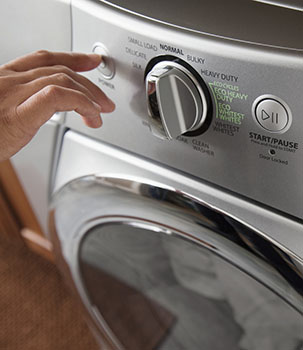Controlling Allergens: Dust Mites
Controlling Allergens: Dust Mites
Constant exposure to allergens means constant allergy symptoms. That’s why it's important to control or stay away from the allergens that cause your symptoms. If you are allergic to dust mites, the tips below can help to reduce your exposure to dust mites.
Dust mite allergy
Dust mites are a common cause of nasal allergies. These mites are tiny organisms. They live in mattresses, box springs, pillows, bedding, upholstered furniture, and carpets. They live in warm, humid conditions. House-dust mites are normal and almost impossible to get rid of. But you can keep them under control.
Make changes to your home
Some furniture, such as sofas and chairs, hold dust mites. To reduce the problem:
-
Choose nonfabric upholstery such as leather or vinyl.
-
Replace horizontal blinds with pull-down shades or vertical blinds.
-
Use washable curtains instead of heavy drapes.
-
Have as little carpeting as possible. Use area or throw rugs that can be washed, if possible.
-
Cover your mattress, box spring, and pillows in allergy-proof casings.
Housecleaning
Here are some tips:
-
Wash sheets, blankets, and mattress pads every week in hot water (at least 130°F).
-
Remove stuffed animals and other things that collect dust, especially in the bedroom. This includes wall hangings, knickknacks, and books.
-
Dust your home every week with a damp cloth. Vacuum once a week. Use HEPA (high efficiency particulate air) filters or 2-ply bags in the vacuum cleaner. Or use a vacuum designed to reduce allergens.
-
If someone else can’t dust and vacuum for you, wearing a filter mask while you clean may help.
Reduce indoor humidity
Dust mites need moist air to live. Use a dehumidifier to reduce air moisture. Don’t use humidifiers or vaporizers.
Talk with your healthcare provider about other ways to reduce dust in your home. Ask about medicines that can help with your allergy symptoms.
Updated:
February 03, 2020
Reviewed By:
Deborah Pedersen MD,Marianne Fraser MSN RN,Daphne Pierce-Smith RN MSN CCRC
